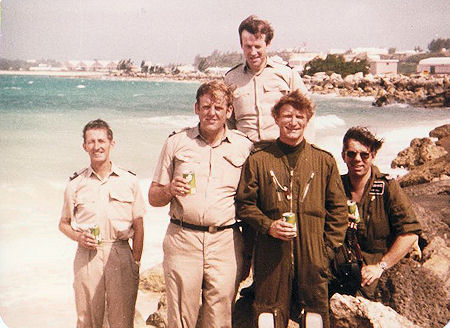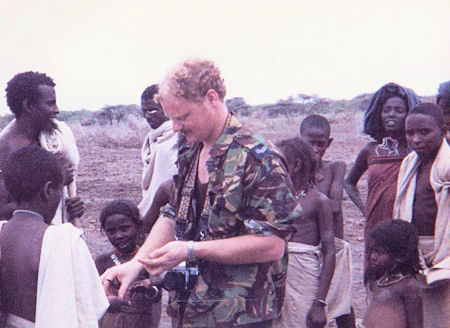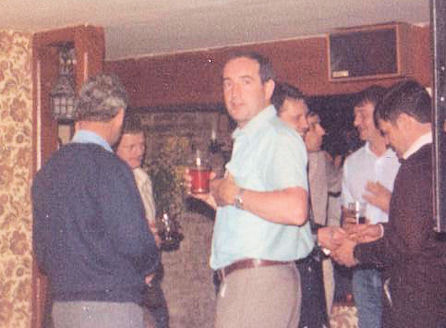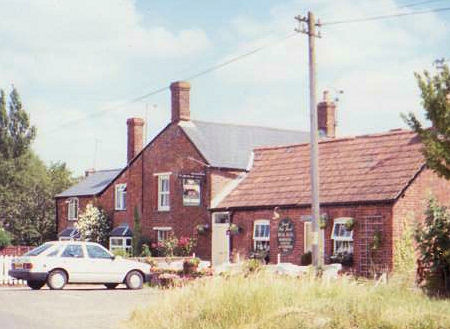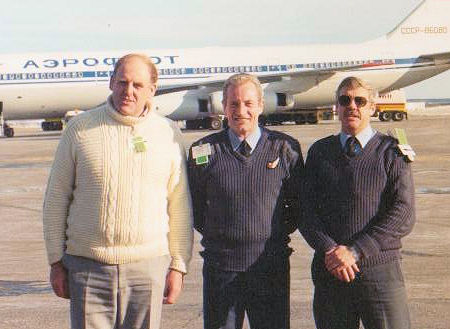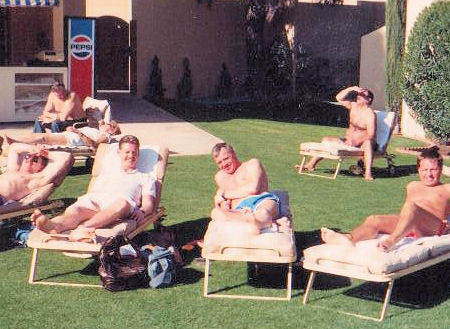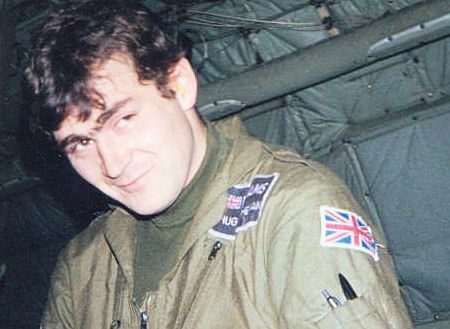Report: Sudden Plunge of New UK A330 Caused by Wedged Camera

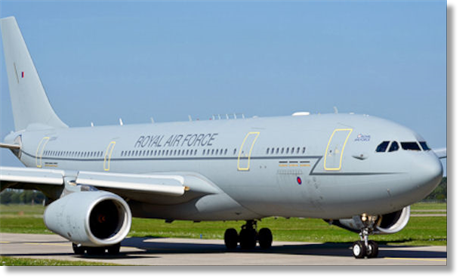
An incident last month that grounded the British Royal Air Force’s new fleet of A330 tanker transport aircraft was caused when a camera became wedged between the side stick control and the pilot’s armrest, according to a report released by the Military Aviation Authority (MAA).
The RAF grounded its fleet of Voyager planes in February, after what the UK Ministry of Defence described as an “in-flight issue” on Feb. 9 resulted in an aircraft suddenly plunging 4,440 feet in 27 seconds during a troop-carrying flight to Afghanistan. Several people onboard sustained minor injuries, and the aircraft was diverted to Incirlik military airfield in Turkey.
The flight restriction was lifted on Feb. 21, when the Voyagers resumed operations transporting troops.
The RAF grounded its fleet of Voyager planes in February, after what the UK Ministry of Defence described as an “in-flight issue” on Feb. 9 resulted in an aircraft suddenly plunging 4,440 feet in 27 seconds during a troop-carrying flight to Afghanistan. Several people onboard sustained minor injuries, and the aircraft was diverted to Incirlik military airfield in Turkey.
The flight restriction was lifted on Feb. 21, when the Voyagers resumed operations transporting troops.
An MAA service inquiry released Wednesday said it is “confident that the pitch down command was the result of an inadvertent physical input to the Captain’s side-stick by means of a physical obstruction (the camera) between the arm-rest and the side stick-unit.” The camera had been used in the three minutes leading up to the incident, the interim report said.
The Voyager, a military tanker-transport version of the Airbus A330 airliner, is provided by the Airbus-led AirTanker consortium under a private finance initiative. In a statement, AirTanker said it welcomed the findings, “which suggest that no technical fault was found with the aircraft.”
Six Voyagers have been delivered to date as AirTanker builds a core fleet of nine planes, with a further five scheduled to be leased to third-party users. The leased aircraft can be called back into RAF service in the event of a surge requirement. The aircraft are owned and maintained by AirTanker, and they operate out of the RAF’s air transport hub at Brize Norton, in southern England.
Voyagers have been operating in the transport role since 2012, and they are scheduled to take over in-flight refueling duties next month, following the retirement March 31 of the RAF’s fleet of Lockheed TriStar planes.
Alongside the service’s VC-10s, the TriStars have been performing tanking and transport duties for decades. The VC-10 exited service with the RAF in September, 2013.
Defense News
The Voyager, a military tanker-transport version of the Airbus A330 airliner, is provided by the Airbus-led AirTanker consortium under a private finance initiative. In a statement, AirTanker said it welcomed the findings, “which suggest that no technical fault was found with the aircraft.”
Six Voyagers have been delivered to date as AirTanker builds a core fleet of nine planes, with a further five scheduled to be leased to third-party users. The leased aircraft can be called back into RAF service in the event of a surge requirement. The aircraft are owned and maintained by AirTanker, and they operate out of the RAF’s air transport hub at Brize Norton, in southern England.
Voyagers have been operating in the transport role since 2012, and they are scheduled to take over in-flight refueling duties next month, following the retirement March 31 of the RAF’s fleet of Lockheed TriStar planes.
Alongside the service’s VC-10s, the TriStars have been performing tanking and transport duties for decades. The VC-10 exited service with the RAF in September, 2013.
Defense News
From: Steve Richardson, Trenton, ON
Sent: Saturday, March 01, 2014 2:39 PM
Subject: RCAF Mystery Photo 022814
Tony,
Sent: Saturday, March 01, 2014 2:39 PM
Subject: RCAF Mystery Photo 022814
Tony,
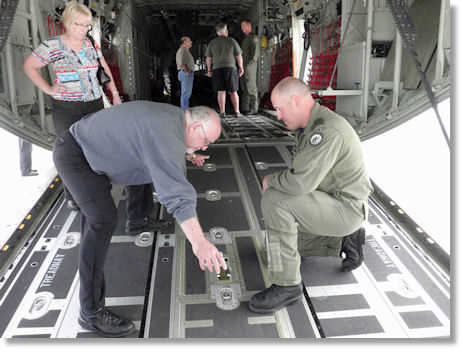
The photo depicts the inside of a C-130 Hercules J Model. On the Ramp Is MCpl John Briscoe and leaning over is Andy Robicheau. Also, the lady behind Andy is his wife Lesley Robicheau.
The guy in the backgroud on the left with the blue jeans is Al Darveau. The guy with the shorts on in the center is Fred Hebb. The tall guy with the flightsuit on the right is CWO Denis Culver.
The picture was taken in September 2013 while the Logistics Movers Reunion was held in Trenton. Everbody had a great time at the Reunion!
Take care,
Steve Richardson
The guy in the backgroud on the left with the blue jeans is Al Darveau. The guy with the shorts on in the center is Fred Hebb. The tall guy with the flightsuit on the right is CWO Denis Culver.
The picture was taken in September 2013 while the Logistics Movers Reunion was held in Trenton. Everbody had a great time at the Reunion!
Take care,
Steve Richardson
From: Dave Bickford, Trenton, ON
Sent: Thursday, February 27, 2014 8:29 PM
Subject: Re: UKMAMS OBA OBB #022814
Thanks Tony...the person in the RCAF mystery photo #022814 is John Briscoe a Loadmaster who at the time was serving with 436 Sqn and now is
with 426 Sqn here in Trenton ON
Dave
From: Fred Hebb, Gold River, NS
Sent: Thursday, February 27, 2014 11:43 PM
Subject: RCAF Mystery Photo #022814
Hi Tony,
The mystery photo of the RCAF is a group of us getting a tour of the J model C130 in Trenton on the reunion weekend. Andy Robicheau checking out the release mechanism and I am the guy in shorts and a fellow Tfc Tech, Darveau getting briefed by the Loadmaster on other aspects of that wonderful airplane
Sent: Thursday, February 27, 2014 11:43 PM
Subject: RCAF Mystery Photo #022814
Hi Tony,
The mystery photo of the RCAF is a group of us getting a tour of the J model C130 in Trenton on the reunion weekend. Andy Robicheau checking out the release mechanism and I am the guy in shorts and a fellow Tfc Tech, Darveau getting briefed by the Loadmaster on other aspects of that wonderful airplane
Also, I don't know if anyone forwarded this to you, so I thought I should. It is with sadness I learned today of Peter Murphy passing away.
I met Pete on 27 March 1961 on Basic training in St Jean Quebec, we were on the same course but Pete had 5 years in the RCN prior to joining the RCAF.
Pete Murphy's obituary
Fred Hebb
I met Pete on 27 March 1961 on Basic training in St Jean Quebec, we were on the same course but Pete had 5 years in the RCN prior to joining the RCAF.
Pete Murphy's obituary
Fred Hebb
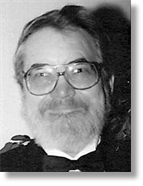
From: John Bell, Desborough, Northants
Sent: Friday, February 28, 2014 4:43 AM
Subject: Re: UKMAMS OBA OBB #022814
Tony,
Seeing Bill Wellman’s twin escapade reminds me of a sort of similar incident.
On 22 April 1977 J team was tasked to go to Benbecula where the Army had a Rapier unit. My 16 year old son, David, who was serving as an army
signals apprentice at Harrogate, was on leave at the time. I asked the then Ops Officer if he could fill the slot for the sixth team member. We were
a 5 man team for a short time.
This was agreed and he joined us, wearing my spare flying suit. The crew thought he was an SAC and were none the wiser. The other team
members were Pete Mahon, Colin Hawes, Nobby Clarke and Nev Whitham. The only person who "sussed" us was the Ground Eng, Bernie Rowes.
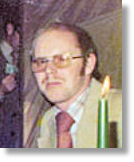
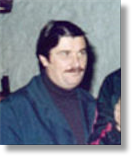
Your two photos from Bruce Oram show Sydney Avery at the Ball, the one with specs, and Terry
Mulqueen at Bushmills, complete with moustache. The others, some of whom look familiar, I
cannot put names to.
Regards
John Bell
RAAF personnel to receive new-look uniforms
Royal Australian Air Force personnel will gain a new identity after the launch of the latest general purpose uniform at the Centenary of Military Aviation Airshow at the weekend.
Air Force Chief Air Marshal Geoff Brown said dark blue and metal grey uniform would replace the current camouflage uniforms.
"The purpose of the GPU is to provide a unique and easily identifiable Air Force presence to the Australian Defence and civilian communities, consistent with the Air Force's distinctive identity and still effective in meeting our service requirements," he said.
"The new uniform will replace the current camouflage uniform, also worn by Army, for general base duties and in non-warlike environments such as humanitarian tasks and defence assistance to the civil community."
Air Marshall Brown said the Air Force GPU will be cost neutral over the long term due to uniform production changes, depletion of existing stocks and reforms to standard equipment issue.
He said it was planned that all Air Force personnel will be issued with a mix of camouflage uniforms and GPUs by the end of 2015.
The Bulletin
Air Force Chief Air Marshal Geoff Brown said dark blue and metal grey uniform would replace the current camouflage uniforms.
"The purpose of the GPU is to provide a unique and easily identifiable Air Force presence to the Australian Defence and civilian communities, consistent with the Air Force's distinctive identity and still effective in meeting our service requirements," he said.
"The new uniform will replace the current camouflage uniform, also worn by Army, for general base duties and in non-warlike environments such as humanitarian tasks and defence assistance to the civil community."
Air Marshall Brown said the Air Force GPU will be cost neutral over the long term due to uniform production changes, depletion of existing stocks and reforms to standard equipment issue.
He said it was planned that all Air Force personnel will be issued with a mix of camouflage uniforms and GPUs by the end of 2015.
The Bulletin
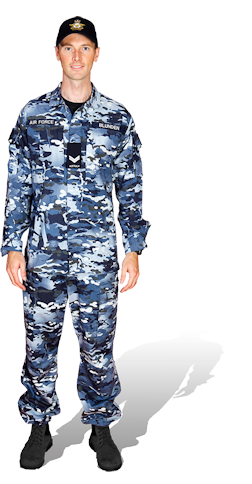
From: John Holloway, Shrewsbury
Sent: Tuesday, March 11, 2014 6:10 PM
Subject: NSRAFA Cosford Branch
Hi Tony,
We had a good turnout at Cosford today; our speaker was Peter Bunting from the RAF Museum at Cosford. He was 22 years in the Fleet Air Arm and has spent 13 years at the museum, mainly overseeing the technical needs of the museum and organising the various displays.
Sent: Tuesday, March 11, 2014 6:10 PM
Subject: NSRAFA Cosford Branch
Hi Tony,
We had a good turnout at Cosford today; our speaker was Peter Bunting from the RAF Museum at Cosford. He was 22 years in the Fleet Air Arm and has spent 13 years at the museum, mainly overseeing the technical needs of the museum and organising the various displays.
From: Michael Fielder, Huntingdon, Cambs
Sent: Monday, March 10, 2014 4:15 PM
Subject: Re: UKMAMS OBA OBB #022814
Hi Tony
The photo of the Bushmills trip September, 1978 - the young 18 year old lad on the left was me, SAC Barney Fielder. Can't believe how young I was, oh well.
Great photo
Barney
Sent: Monday, March 10, 2014 4:15 PM
Subject: Re: UKMAMS OBA OBB #022814
Hi Tony
The photo of the Bushmills trip September, 1978 - the young 18 year old lad on the left was me, SAC Barney Fielder. Can't believe how young I was, oh well.
Great photo
Barney

His talk and pictures focused mainly on the creation of the Cold War Museum starting in 2004 until completion in 2006, costing a total of £12.5 million and is quite proud of the outcome.
They were expecting 50,000 visitors a year but were really pleased that it has gone into the millions.
The manouvering and hanging the various aircraft was quite difficult; the only place where there are the three V bombers under one roof and the Belfast which was far too big to be kept in a hangar and there it is - the first time that one has been under cover since they were manufactured.
The Vulcan is one of the three that were used to bomb the airfield at Stanley in the Falkland Islands which he said it indicated to the Argies we could hit them at home if necessary.
They were expecting 50,000 visitors a year but were really pleased that it has gone into the millions.
The manouvering and hanging the various aircraft was quite difficult; the only place where there are the three V bombers under one roof and the Belfast which was far too big to be kept in a hangar and there it is - the first time that one has been under cover since they were manufactured.
The Vulcan is one of the three that were used to bomb the airfield at Stanley in the Falkland Islands which he said it indicated to the Argies we could hit them at home if necessary.
He also gave us a progress report on the Dornier 17 recently discovered off the coast after lying in the sea for over seventy years. It is now under a constant spray of citric acid/water mix to get rid of the huge world of crustaceans that have been living on the wreck. He brought a collection of smaller parts that had gone thru the process and they looked almost new; one of the oxygen bottles still had gas inside it.
His talk lasted well over an hour and there is so much more to tell us that he will be returning some time in the future to tell us more. He is really pleased with the progress of the museum that he has been invloved in and quite rightly so!
I recommend that anyone that has the opportunity to visit the museum do so. Entry is free! I've been to both Hendon and Duxford and it is as good as them, maybe even better.
Hope the foregoing is of interest.
Cheers
John
I recommend that anyone that has the opportunity to visit the museum do so. Entry is free! I've been to both Hendon and Duxford and it is as good as them, maybe even better.
Hope the foregoing is of interest.
Cheers
John
Royals Heading Down Under
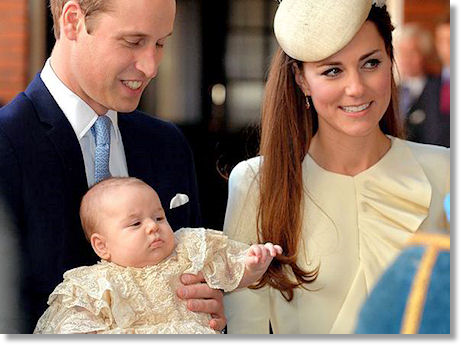
The three are spending time together as they travel around Australia and New Zealand. Prince William and Kate have cut the number of potential engagements and tailored a landmark tour of New Zealand and Australia next month to give themselves as much time as possible with their infant son, who will be around nine months old by the time it finishes.
The royal couple will use what aides call a hub and spoke system, returning to three regional bases at the Governor-Generals’ residences in Wellington, Sydney, and Canberra to see George for a few hours on all but two days of the 19-day family-friendly tour from April 7 to 25.
Their decision to go backwards and forwards across the two countries from the hubs means more travelling time for them and fewer engagements, particularly in the evening, than if they followed the more traditional path of moving from one city to another.
The royal couple will use what aides call a hub and spoke system, returning to three regional bases at the Governor-Generals’ residences in Wellington, Sydney, and Canberra to see George for a few hours on all but two days of the 19-day family-friendly tour from April 7 to 25.
Their decision to go backwards and forwards across the two countries from the hubs means more travelling time for them and fewer engagements, particularly in the evening, than if they followed the more traditional path of moving from one city to another.
But it will give them more precious time with George and respite to a new nanny who is expected to accompany the family on the tour. They will also have a couple of family days off duty - at a private residence outside Wellington shortly after their arrival in New Zealand, and in Canberra towards the end of the tour.
Taxpayers in New Zealand and Australia will pick up the bill for the tour, as they are going as members of the Royal Family of each country. The royal party will fly by scheduled airline from London to Australia and onto New Zealand courtesy of the Royal New Zealand Air Force for the start of the tour in Wellington.
The RNZAF will fly them around the country and then the Royal Australian Air Force will transport the party to Sydney and take care of their internal flights before they return to London on a scheduled airline.
Taxpayers in New Zealand and Australia will pick up the bill for the tour, as they are going as members of the Royal Family of each country. The royal party will fly by scheduled airline from London to Australia and onto New Zealand courtesy of the Royal New Zealand Air Force for the start of the tour in Wellington.
The RNZAF will fly them around the country and then the Royal Australian Air Force will transport the party to Sydney and take care of their internal flights before they return to London on a scheduled airline.
In New Zealand, The Duke and Duchess will visit:
• Wellington (7th April, 9th April, 16th April)
• Blenheim (10th April)
• Auckland (11th April)
• Hamilton and Cambridge (12th April)
• Dunedin (13th April)
• Queenstown (13th April)
• Christchurch (14th April)
• Wellington (7th April, 9th April, 16th April)
• Blenheim (10th April)
• Auckland (11th April)
• Hamilton and Cambridge (12th April)
• Dunedin (13th April)
• Queenstown (13th April)
• Christchurch (14th April)
In Australia:
• Sydney, NSW (16th, 18th, 20th April)
• Blue Mountains, NSW (17th April)
• Brisbane, QLD (19th April)
• Uluru (Ayers Rock), NT (22nd April)
• Adelaide, SA (23rd April)
• Canberra, ACT (24th, 25th April)
• Sydney, NSW (16th, 18th, 20th April)
• Blue Mountains, NSW (17th April)
• Brisbane, QLD (19th April)
• Uluru (Ayers Rock), NT (22nd April)
• Adelaide, SA (23rd April)
• Canberra, ACT (24th, 25th April)
Daily Express
From: Don Hunter, St Maximin
Sent: Tuesday, March 18, 2014 5:43 AM
Subject: My Scariest Flight
Hi Tony,
Sent: Tuesday, March 18, 2014 5:43 AM
Subject: My Scariest Flight
Hi Tony,
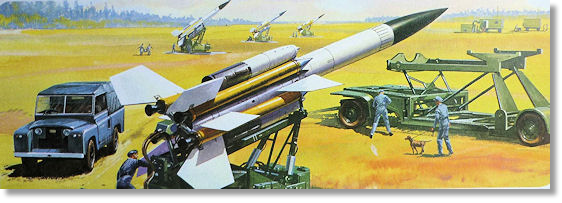
I remember it well! Coming back from Bruggen to West Raynham on a Missile Exchange one warm summer's evening, 1975. Just airborne when the floor of the Herc is awash with liquid propellant of some sort.
The Loadie rushes down the back where I was seated next to the port para door. He opens the ramp and para doors, whereupon out goes my gobbly box AND my SD hat (no doubt still being worn by a German farmer).
A quick circuit and back to Bruggen with the wind howling and a night stop and many, many beers!
The Loadie rushes down the back where I was seated next to the port para door. He opens the ramp and para doors, whereupon out goes my gobbly box AND my SD hat (no doubt still being worn by a German farmer).
A quick circuit and back to Bruggen with the wind howling and a night stop and many, many beers!
Cheers
Don
Don
From: Peter King, Abingdon,Oxon
Sent: Tuesday, March 18, 2014 6:17 AM
Subject: My Scariest Flight
Hello Tony,
I recall was in an RNZAF Bristol Freighter (B170) in 1969
Sent: Tuesday, March 18, 2014 6:17 AM
Subject: My Scariest Flight
Hello Tony,
I recall was in an RNZAF Bristol Freighter (B170) in 1969
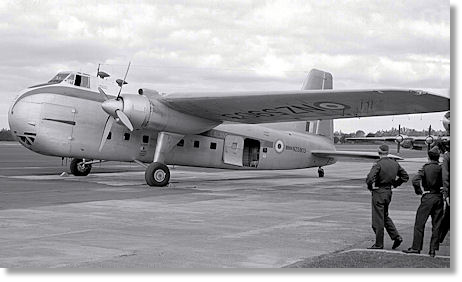
I had been detached from Changi to Bangkok for two weeks and had arranged to return on a Bristol Freighter. When it arrived at Bangkok I saw it was carrying a New Zealand Army band that had been somewhere and were returning to Malacca, so we would divert there. It was about noon when we were airborne and after about an hour or so we were over the Malaysian mountains where thunderstorms were brewing up. We had no loadmaster and I was asked to get the soldiers to fasten their seat belts as it was getting bumpy.
I then sat down at the back (facing the rear of course) when we suddenly felt ourselves dropping, although we were held in our seats by the belts (or at least I was!).
At the back of the cabin, tied down on a ledge, was a 5 gallon urn of orange squash for the passengers to use and I saw the lid, which one of them hadn't turned when he had used it last, rise on top of a spherical ball of orange squash which hit the ceiling then disintegrated to cover the floor.
I then sat down at the back (facing the rear of course) when we suddenly felt ourselves dropping, although we were held in our seats by the belts (or at least I was!).
At the back of the cabin, tied down on a ledge, was a 5 gallon urn of orange squash for the passengers to use and I saw the lid, which one of them hadn't turned when he had used it last, rise on top of a spherical ball of orange squash which hit the ceiling then disintegrated to cover the floor.
I loosened my belt so as to turn round to ensure the soldiers stayed seated and remained seated until one of the crew came down. I pointed out the deluge. "Yes" he said, "we dropped about 600 feet just now."
He said the troops should remain seated but asked me to join him in checking the rear compartment which houses the elsan toilets as well as the aircraft batteries. Would you believe it but another soldier had used the toilet and hadn't turned the lid and the contents of the toilet were gently sizzling on the batteries.
Well we eventually dropped off the band at Malacca and the captain decided us fit to fly back to Changi. I will always remember that flight.
Hope this may interest you.
Peter King, Air Movements Khartoum, Khormaksar, Colerne, Changi, Lyneham, Brize Norton 1954-1965 (with a little bit of Supply in between!)
He said the troops should remain seated but asked me to join him in checking the rear compartment which houses the elsan toilets as well as the aircraft batteries. Would you believe it but another soldier had used the toilet and hadn't turned the lid and the contents of the toilet were gently sizzling on the batteries.
Well we eventually dropped off the band at Malacca and the captain decided us fit to fly back to Changi. I will always remember that flight.
Hope this may interest you.
Peter King, Air Movements Khartoum, Khormaksar, Colerne, Changi, Lyneham, Brize Norton 1954-1965 (with a little bit of Supply in between!)
From: Chris Goss, Cookham, Berkshire
Sent: Tuesday, March 18, 2014 6:10 AM
Subject: My Scariest Flight
Tony,
Sent: Tuesday, March 18, 2014 6:10 AM
Subject: My Scariest Flight
Tony,
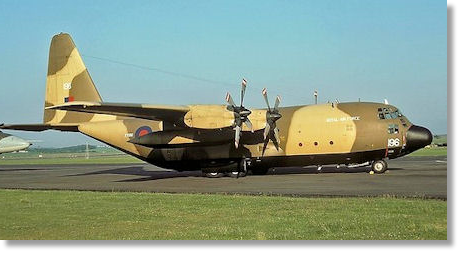
There was the trip that myself, Shuggie Shewan and Al Verth did to Vegas (via Goose Bay and Little Rock). Miserable crew who did not engage with us until we got to Vegas. They were 'lunch critical' (we were staying) so the ALM (who had been a particularly miserable git) said he would do the winching. Trouble was he wasn't watching what he was doing and instead of using the handle to take the cable in, he used the control. The hook then grabbed the ramp sill, he kept on winching after which there was a hell of a bang as the floor ripped up and the cable started lashing about.
It glanced off either Shuggie or Al's rump and then proceeded up the cargo bay, the cable catching the ALM around the throat and the hook smashing his knee (breaking it). I heard a bang and for some unknown reason threw myself to the floor as the winch hook slithered past me.
It glanced off either Shuggie or Al's rump and then proceeded up the cargo bay, the cable catching the ALM around the throat and the hook smashing his knee (breaking it). I heard a bang and for some unknown reason threw myself to the floor as the winch hook slithered past me.
ALM off to hospital, C130 CAT whatever and none of us Movers were ever asked to give evidence... next time I saw the ALM he was commissioned, so what he did was obviosuly not career limiting!
Regards
Chris
Regards
Chris
From: Graham Lockwood, Leyland, Lancs
Sent: Tuesday, March 18, 2014 6:27 AM
Subject: My Scariest Flight
Flying in the jump seat of an Andover landing at Anguilla… Short paved runway… Landed just short of the runway… Landing wheels hit the start of the paved runway and the plane bounced back into the air… Pilot turned up the revs and flew around for another landing… Could have been nasty… A bit of foul language mixed with relieved chuckles!
Graham
Sent: Tuesday, March 18, 2014 6:27 AM
Subject: My Scariest Flight
Flying in the jump seat of an Andover landing at Anguilla… Short paved runway… Landed just short of the runway… Landing wheels hit the start of the paved runway and the plane bounced back into the air… Pilot turned up the revs and flew around for another landing… Could have been nasty… A bit of foul language mixed with relieved chuckles!
Graham
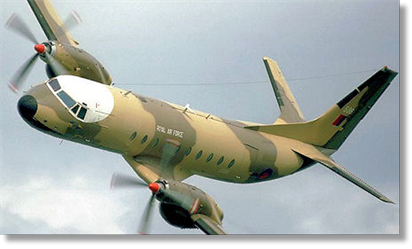
From: Stephen Smith, Reading, Berkshire
Sent: Tuesday, March 18, 2014 6:33 AM
Subject: RE: Newsletter - My Scariest Flight
Hi Tony
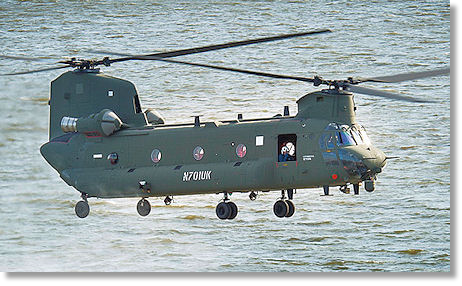
I’ve had two scariest flights.
June 1984 - Whilst serving on 240 OCU, I was en route from Gutersloh to Odiham in the back of a Chinook, fully laden with Grolsch and Warsteiner in preparation for the squadron summer BBQ, when the pilot declared a Mayday due to having shut down the starboard engine when we were over the English Channel halfway between Ostend and Manston.
We diverted to Manston where we landed safely. We very quickly covered the cargo with copious amounts of tarpaulin and camouflage netting so as to disguise the nature of the cargo that we clearly couldn’t explain away as the personal allowance of the 7 people onboard. I wasn’t scared by the engine shutdown but more by being nailed by Customs at Manston.
June 1984 - Whilst serving on 240 OCU, I was en route from Gutersloh to Odiham in the back of a Chinook, fully laden with Grolsch and Warsteiner in preparation for the squadron summer BBQ, when the pilot declared a Mayday due to having shut down the starboard engine when we were over the English Channel halfway between Ostend and Manston.
We diverted to Manston where we landed safely. We very quickly covered the cargo with copious amounts of tarpaulin and camouflage netting so as to disguise the nature of the cargo that we clearly couldn’t explain away as the personal allowance of the 7 people onboard. I wasn’t scared by the engine shutdown but more by being nailed by Customs at Manston.
Move forward 29 years.
July 2013 - Whilst training for my PPL and in the throes of completing a solo flight, I had just turned onto Final at White Waltham when the engine spluttered and stopped. I can say with some authority that I cacked myself. My heart rate maxed out at about 175 bpm quite quickly. Rather than bury the aircraft in the allotments in the undershoot, I used the training that I had received and about 30 seconds later I landed without incident. I can truly say for a few brief brown trouser moments I was somewhat galvanised by the sight of an almost stationary propeller.
I have now completed my PPL without further incident.
Kindest Regards
Stephen Smith
July 2013 - Whilst training for my PPL and in the throes of completing a solo flight, I had just turned onto Final at White Waltham when the engine spluttered and stopped. I can say with some authority that I cacked myself. My heart rate maxed out at about 175 bpm quite quickly. Rather than bury the aircraft in the allotments in the undershoot, I used the training that I had received and about 30 seconds later I landed without incident. I can truly say for a few brief brown trouser moments I was somewhat galvanised by the sight of an almost stationary propeller.
I have now completed my PPL without further incident.
Kindest Regards
Stephen Smith
From: Wayne Flaherty, Winnipeg, MB
Sent: Tuesday, March 18, 2014 8:42 AM
Subject: My Scariest Flight
Hi Tony,
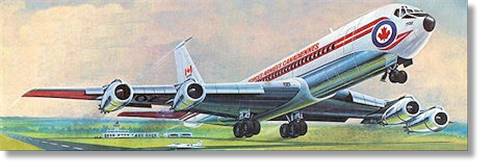
My scariest flight was while I was still in training for my 707 Loadmaster course. We were landing in Norway with another trainee L Col at the controls. I was on the headset at the back and our pilot had never flown the big airplane before. He was a pipeliner for a number of years and then had a desk job lately. He was to be our new CO. On landing he never got set up right and the first wheel to land was the nose wheel, hard. This bumped us up and we were way out of line. Then the left main tires hit the runway and back up we went. At this point we were so out of line the left wing tip was inches off the ground. On the head set I heard, “Jesus Christ, I have control”. That was the instructor pilot taking over.
The L Col never flew again and was CT’d right away. I don’t know how we managed the landing after that. I actually thought we were all dead.
Another was on a 437 Sqn training flight leaving from Mexico City. Lots of thunderclouds in the area but we went anyway. This was not the right thing to do. We had to make hard banks to get away from the big thunderstorm clouds with lots of G’s and the turbulance was severe. This was the worst turbulance I have ever experienced. I thanked all the Boeing engineers that day for making such a great airplane. I thought the wings would break off!
Regards
Wayne
Another was on a 437 Sqn training flight leaving from Mexico City. Lots of thunderclouds in the area but we went anyway. This was not the right thing to do. We had to make hard banks to get away from the big thunderstorm clouds with lots of G’s and the turbulance was severe. This was the worst turbulance I have ever experienced. I thanked all the Boeing engineers that day for making such a great airplane. I thought the wings would break off!
Regards
Wayne
From: Richard Lloyd, Dalgety Bay
Sent: Tuesday, March 18, 2014 9:12 AM
Subject: My Scariest Flight
Hi Tony,
Sent: Tuesday, March 18, 2014 9:12 AM
Subject: My Scariest Flight
Hi Tony,
My Scariest Flight - 1979
It's not really a long flight at all. The distance between Dakar in Senegal and Abidjan in the Ivory Coast is about a thousand miles and, as you might expect, takes around two and a half hours.
In 1980, after leaving the RAF, I was employed by BAe at Hatfield as a regional marketing executive (OK, salesman!) for the BAe 146, now called the RJ100 or something similar. Thanks to my tour of duty as liaison officer in Bordeaux, I had become a French Interpreter, and my allocated territory was French-speaking Africa. So, on a regular basis, I would visit Algeria, Tunisia, Morocco, Mauretania, Senegal, Niger, Upper Volta, Chad, Zaire (no thanks!), Gabon, Cameroon, Guinea-Bissau - I may have missed one or two. As a bonus, and because it made geographical sense, I was also allowed to visit Nigeria.
I won't bore you with the detail, but selling airliners, even relatively inexpensive ones like the 146 at $10m a copy, is a complex business, needing contacts in Government, International Banks, and of course, the airline itself.
It's not really a long flight at all. The distance between Dakar in Senegal and Abidjan in the Ivory Coast is about a thousand miles and, as you might expect, takes around two and a half hours.
In 1980, after leaving the RAF, I was employed by BAe at Hatfield as a regional marketing executive (OK, salesman!) for the BAe 146, now called the RJ100 or something similar. Thanks to my tour of duty as liaison officer in Bordeaux, I had become a French Interpreter, and my allocated territory was French-speaking Africa. So, on a regular basis, I would visit Algeria, Tunisia, Morocco, Mauretania, Senegal, Niger, Upper Volta, Chad, Zaire (no thanks!), Gabon, Cameroon, Guinea-Bissau - I may have missed one or two. As a bonus, and because it made geographical sense, I was also allowed to visit Nigeria.
I won't bore you with the detail, but selling airliners, even relatively inexpensive ones like the 146 at $10m a copy, is a complex business, needing contacts in Government, International Banks, and of course, the airline itself.
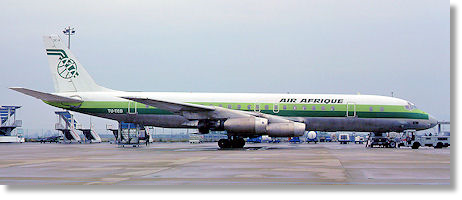
I was doing not badly with the Ivory Coast, and making inroads into Senegal. As I boarded the Air Afrique DC8 in Dakar, after a memorable visit involving some of the best seafood I've ever eaten, I little suspected what sort of flying experience lay ahead of me. In those days Dakar and Abidjan were jewels in the French Colonial crown. Superb small cities, with major brand shops, quality restaurants and bars, and largely friendly locals. The Hotel Ivoire in Abidjan, slap-bang on the Equator had an ice-rink in the basement.
Those days are long gone, and I understand Abidjan in particular is a scary place with little of its former glory.
Those days are long gone, and I understand Abidjan in particular is a scary place with little of its former glory.
I was on my way to meet a Minister from President Houphouët Boigny's (known disrespectfully by us as Humphrey Bogart) government to present him with a model of the 146 in Air Ivoire livery.
Air Afrique pilots were drawn from the deep well of retired (or fired?) Armée de l'Air aircrew, and based on how it often felt in the aeroplane, many of these had been fighter pilots. At about 1500 we took off for Abidjan with a lightly loaded aircraft, I suppose there were about 70 pax on board, and I was sat next to an aged tribesman, who was intent on using his prayer beads to ensure our safety. This was to prove a good idea, given the conditions we encountered at Abidjan. About an hour and three quarters into the flight, with about 45 minutes to run, the captain announced that there were thunderstorms over Abidjan, and this might cause delays...
Air Afrique pilots were drawn from the deep well of retired (or fired?) Armée de l'Air aircrew, and based on how it often felt in the aeroplane, many of these had been fighter pilots. At about 1500 we took off for Abidjan with a lightly loaded aircraft, I suppose there were about 70 pax on board, and I was sat next to an aged tribesman, who was intent on using his prayer beads to ensure our safety. This was to prove a good idea, given the conditions we encountered at Abidjan. About an hour and three quarters into the flight, with about 45 minutes to run, the captain announced that there were thunderstorms over Abidjan, and this might cause delays...
Overhead Abidjan 20 minutes later we began our approach in 'bumpy' (understatement) conditions. What the captain tried to do was to fly the aeroplane through gaps in the cloud, to get on the final approach to Abidjan. We descended through very turbulent conditions, couldn't see the ground, and eventually on came the power and turning steeply left (and pulling significant G) through more turbulence one could feel the height gain. Round we went again; again heavy turbulence, and another missed approach, steep turn, and go-round.
The aged tribesman's fingers were like bees' wings on the prayer beads, and he began to visibly perspire. The captain apologised and said it was just a matter of getting the right conditions to land. I am not exaggerating when I say we had 16 (count them!) missed approaches. Everyone was very concerned, at least the pax anyway. Eventually after about 45 more minutes we succeeded in landing, at high speed, and came to a stop just short of the 'piano keys' at the far end of the runway. I suppose one should have applauded the skill of the pilot, I certainly was so grateful to be on the ground in one piece that I managed a smile to the old guy in the seat next to me. He smiled toothlessly back and held up his prayer beads by way of explanation for our eventual safe arrival.
Regards
Richard (Dick) Lloyd
The aged tribesman's fingers were like bees' wings on the prayer beads, and he began to visibly perspire. The captain apologised and said it was just a matter of getting the right conditions to land. I am not exaggerating when I say we had 16 (count them!) missed approaches. Everyone was very concerned, at least the pax anyway. Eventually after about 45 more minutes we succeeded in landing, at high speed, and came to a stop just short of the 'piano keys' at the far end of the runway. I suppose one should have applauded the skill of the pilot, I certainly was so grateful to be on the ground in one piece that I managed a smile to the old guy in the seat next to me. He smiled toothlessly back and held up his prayer beads by way of explanation for our eventual safe arrival.
Regards
Richard (Dick) Lloyd
From: David Packman, Ledbury, Herefordshire
Sent: Tuesday, March 18, 2014 9:59 AM
Subject: My Scariest Flight
Good Day Tony,
While I only had a single ‘movements’ tour, I very much enjoy reading the Newsletter and catching up with what is happening to old friends such
Bill Girdwood and David Stevens, to say nothing of David Eggleton who kindly and efficiently ‘looked after’ me during my first ever, non-
movements tour at RAF Wittering in 1961. A couple of my recollections may amuse readers and may also possibly ring a few bells.
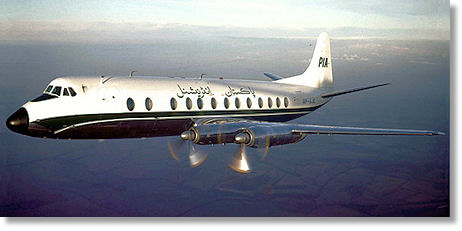
When I was at RAF Masirah in 1964/65 the new camp was being built by a British firm called Costain Mothercat who employed a lot of Pakistani labourers. These were rotated between Oman and Pakistan at regular intervals via PIA Viscount aircraft. Getting everyone on board was quite a task, but not so great as fitting all their baggage into the hold (it was quite amazing what odd items were wrapped up in bedding rolls and the like).
On one occasion I was walking along the aircraft aisle checking that actual numbers equated to those on the manifest when I found a group of the erstwhile labourers busy brewing up some chai on an open primus stove. They may not have been aware of the implications but I certainly was and they quickly got the message!
On one occasion I was walking along the aircraft aisle checking that actual numbers equated to those on the manifest when I found a group of the erstwhile labourers busy brewing up some chai on an open primus stove. They may not have been aware of the implications but I certainly was and they quickly got the message!
Many years later I had just taken over from Bob Dixon in Nigeria and had to fly by civil air from Kaduna in the north of the country to Lagos in the south. It was general practice for all and sundry just to mill around on the airport hardstanding prior to boarding. During this time we saw another couple of Europeans who were also Lagos-bound. We did not see them during the flight but did on arrival at Lagos. We subsequently found out that they had travelled using spare seats on the flight deck. At this time it was not at all unusual to find that there were more potential passengers than seats and for aircraft captains and cabin crew to be ‘dashed’ (ie: bribed) to rejig the seating plan to allow the favoured few to get on board. We also had it on good authority that, on at least one occasion, there were obviously too many passengers so the captain had a ‘good idea’. He lined up al the passengers under one wing and told them to run three times round the aircraft. The first ones to get back to the foot of the steps were allowed on board!
We used to travel from UK to Nigeria courtesy of British Caledonian whose sole Boeing 747 was appropriately named ‘Mungo Park’. Flights into Kano used to arrive at dusk and it we always hoped that the airfield lights would actually be lit and would stay lit. Mains power was pretty ‘suspect’ and there was no standby generator. If the lights went out the nearest diversion airfield was Lagos several hundreds of miles to the south and ‘Mungo Park’ had only sufficient fuel to hold for 20 minutes before it had to go on to Lagos.
Life in rural Herefordshire where Ann and I now live is very much quieter but still thoroughly enjoyable.
Good wishes,
David
Life in rural Herefordshire where Ann and I now live is very much quieter but still thoroughly enjoyable.
Good wishes,
David
From: Charles Cormack, Lyneham Village
Sent: Tuesday, March 18, 2014 12:38 PM
Subject: Scariest Moments
Sent: Tuesday, March 18, 2014 12:38 PM
Subject: Scariest Moments
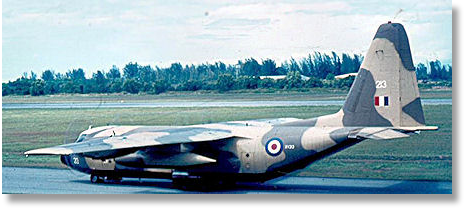
In June 1967, whilst enroute from Changi to Woomera with a full load of Matra AS 30 missiles on a 48 Squadron Herc, we were on approach to Darwin when the pilot discovered that the wheels would not function as they should do. We circled over the Gulf of Carpenteria whilst he tried recycling the gear and at this stage his thoughts were of dumping the load and having to do a belly landing which we were soon to learn was a no-go.
The load was on plywood baseboards and 4 track rollers and each container, which was about the size and shape of a coffin, was stacked 2 high on the baseboard and weighed around 300 lbs each.
With the turbulence we had during the flight the baseboards had buckled in the centre and of course the rearmost floor transverse beam is much larger than the others and we could not get the load past the beam.
We eventually managed to wind down the main wheels and got a green, however the nose gear is somewhat of a free fall, and although we could see that it appeared to be down through the inspection window below the flightdeck, it remained on red.
After using up most of our fuel it was decided that he would have a go and Darwin went to a full emergency as we would have caused the same effect as the cyclone was to do a few years later.
We eventually managed to wind down the main wheels and got a green, however the nose gear is somewhat of a free fall, and although we could see that it appeared to be down through the inspection window below the flightdeck, it remained on red.
After using up most of our fuel it was decided that he would have a go and Darwin went to a full emergency as we would have caused the same effect as the cyclone was to do a few years later.
Having opened both side para doors and us all sitting very close to them he gave it a go and we were all ready to jump, not that that would have done us a lot of good unless there was a fire. Whether all our weight to the rear helped or not, he creamed the aircraft in holding the nose up as long as possible and then hit the brakes and reverse thrust at the same time. The nose wheel held and we met all the fire engines at the end of the runway.
The Aussies wanted the aircraft moved as soon as possible so at that stage we borrowed a forklift, lowered the ramp and put the forklift on the ramp and selected ramp closed which allowed the Ground Eng to inspect the nose gear and put the pin in and we got towed into the dispersal. We borrowed jacks from them and they did retraction tests which went OK. The following day we carried on to Woomera without further mishap.
I must admit that I came very close to changing my underwear but it was not due to the temperature in Darwin!
Cheers
Chas
The Aussies wanted the aircraft moved as soon as possible so at that stage we borrowed a forklift, lowered the ramp and put the forklift on the ramp and selected ramp closed which allowed the Ground Eng to inspect the nose gear and put the pin in and we got towed into the dispersal. We borrowed jacks from them and they did retraction tests which went OK. The following day we carried on to Woomera without further mishap.
I must admit that I came very close to changing my underwear but it was not due to the temperature in Darwin!
Cheers
Chas
From: Syd Avery, Guardamar, Alicante
Sent: Tuesday, March 18, 2014 4:54 AM
Subject: My Scariest Flight
Here's mine…
Sent: Tuesday, March 18, 2014 4:54 AM
Subject: My Scariest Flight
Here's mine…
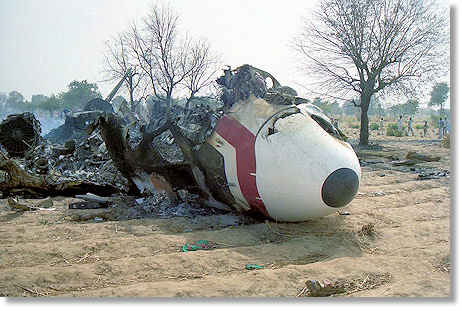
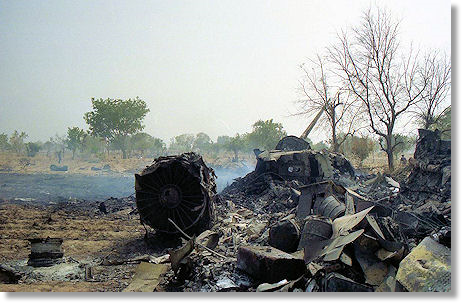
Regards
Syd
Syd
From: Christopher Briggs, Stafford
Sent: Tuesday, March 18, 2014 5:45 PM
Subject: My Scariest Flight
Now there’s a subject Tony. My scariest flight has got to be in 1974 when we were sent up to the Faroe Islands to unload some radar equipment which apparently the British were responsible for. Take off was fine but on nearing we were told the island was covered in fog, and as it is a about 1000 ft above sea level it might be a bit difficult.
So the first attempt was aborted and around we went for another go, second attempt still could not see a thing, round again… and so it went on. On our sixth attempt we popped out of the cloud and landed safely. I got quite dizzy going round in circles!
Sent: Tuesday, March 18, 2014 5:45 PM
Subject: My Scariest Flight
Now there’s a subject Tony. My scariest flight has got to be in 1974 when we were sent up to the Faroe Islands to unload some radar equipment which apparently the British were responsible for. Take off was fine but on nearing we were told the island was covered in fog, and as it is a about 1000 ft above sea level it might be a bit difficult.
So the first attempt was aborted and around we went for another go, second attempt still could not see a thing, round again… and so it went on. On our sixth attempt we popped out of the cloud and landed safely. I got quite dizzy going round in circles!
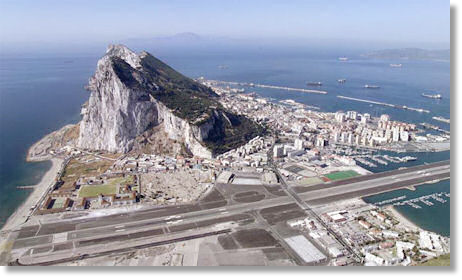
Then there was the time I went to Gibraltar on a Britannia, sat on the flight deck watching the landing, coming in perfectly until we got level with the control tower and the pilot declared we not gonna make it so we went round again.
This was the time when the airspace was minimal because of the Spanish restrictions, so it was a tight turn to port, straight, tight turn to port and in we came making a safe landing.
It’s funny how you always remember the silly ones and not the ones where everything goes ok!
All the best to all - not long now till retirement time!
Chris
This was the time when the airspace was minimal because of the Spanish restrictions, so it was a tight turn to port, straight, tight turn to port and in we came making a safe landing.
It’s funny how you always remember the silly ones and not the ones where everything goes ok!
All the best to all - not long now till retirement time!
Chris
From: Jack Riley, Urangan, QLD
Sent: Tuesday, March 18, 2014 9:09 PM
Subject: Scariest…
Sent: Tuesday, March 18, 2014 9:09 PM
Subject: Scariest…
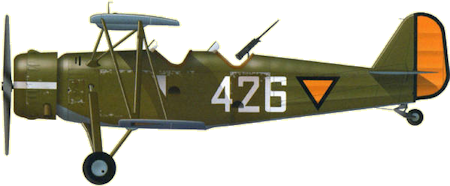
Hi Tony
…and first flight. Take off from Northolt in Dutch Koolhoven (flown out as a getaway escape) Mad Dutch pilot. Fly through wartime London balloon barrage… up Oxford Street at rooftop level... back out through the barrage and down into Northolt.
Whew!
Jack
…and first flight. Take off from Northolt in Dutch Koolhoven (flown out as a getaway escape) Mad Dutch pilot. Fly through wartime London balloon barrage… up Oxford Street at rooftop level... back out through the barrage and down into Northolt.
Whew!
Jack
From: David Howley, Melton Mowbray
Sent: Wednesday, March 19, 2014 5:23 AM
Subject: Scariest Flight
Hi Tony,
RAF El Adem, Libya, in a 70 Sqn Argosy in 1969. I was returning from Akrotiri and on finals when the aircraft literally fell out of the sky. The event was so sudden and the bang as we hit the runway so loud that all the pax thought we had crashed - there were quite a few ashen faces walking off that flight at the terminal!
Sent: Wednesday, March 19, 2014 5:23 AM
Subject: Scariest Flight
Hi Tony,
RAF El Adem, Libya, in a 70 Sqn Argosy in 1969. I was returning from Akrotiri and on finals when the aircraft literally fell out of the sky. The event was so sudden and the bang as we hit the runway so loud that all the pax thought we had crashed - there were quite a few ashen faces walking off that flight at the terminal!
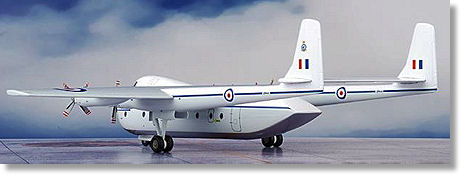
It was said we hit an air pocket (wind shear?) and dropped vertically onto the threshold - no idea how high, probably less than 100 ft but it gave me long term problems with later landings - very nervous and with really sweaty palms. I am very pleased to say that taking up gliding cured that.
Regards
David
Regards
David
From: John Guy
Sent: Wednesday, March 19, 2014 6:12 AM
Subject: Scariest Flight
Hello Tony,
Whilst on NEAF MAMS one regular flight by C130 would depart Friday morning for Salalah, Seeb, and anywhere on route before night stopping at
Masirah. Mid-morning on the Saturday we would be airborne calling at locations, seemingly that the crew would like to visit for a beer, before
returning to Masirah to night stop, and a return to Akrotiri on the Monday.
On one such trip we took off from Salalah, flew down the coast before heading inland down a valley so narrow that we were posted either side of
the aircraft to keep watch on the wing tips. We eventually off loaded a few bits for the waiting civvies. Now for departure, the real scary part, for
immediately at the end of the airstrip was a mountain! The aim was to hurtle down the strip before turning at the last minute to starboard &
entering the valley again.
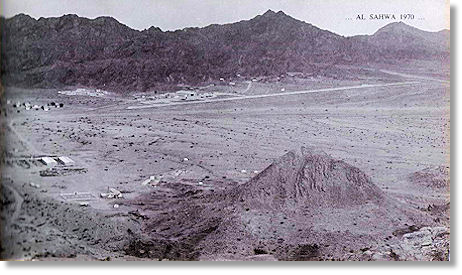
Bait Al Falaj 1970
Bait Al Falaj 1986
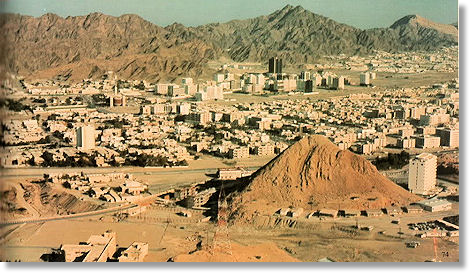
A memorable, rather than scary, departure from Akrotiri was in the early hours of a Sunday morning in June, 1974, waiting on the pan for a Belfast which we were to offload in Addis Ababa. It was so unusually pleasant and peaceful. The Officer’s Mess summer ball was still in progress and we could plainly hear The Hollies, “The Air That I Breathe” playing. I love that piece of music, which is why, 40 years later, I still vividly remember that departure so well.
Regards,
John Guy
Regards,
John Guy
From: Arthur Rowland, St. Ives, Cambridgeshire
Sent: Wednesday, March 19, 2014 12:05 PM
Subject: Scariest Flight
Hi Tony,
Sent: Wednesday, March 19, 2014 12:05 PM
Subject: Scariest Flight
Hi Tony,
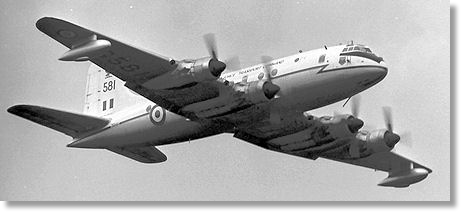
This incident happened during a flight sometime in the early 60's when I was a mover in Malta, pre my MAMS tour.
A task had been called to recover the remnants of a squadron's equipment from Elefsis (Athens). A Hastings, with me as the sole pax (and mover), was despatched and I envisaged just a small load - some hope! A dog's breakfast of cargo awaited, and I managed ,with some ground crew support, to lash down the myriad equipment. Of course there was no help from the AQM, who disappeared on landing. As usual a high proportion of the Hastings tie-down points were u/s. So it was an "interesting" load, just about safely secured when we took off.
A task had been called to recover the remnants of a squadron's equipment from Elefsis (Athens). A Hastings, with me as the sole pax (and mover), was despatched and I envisaged just a small load - some hope! A dog's breakfast of cargo awaited, and I managed ,with some ground crew support, to lash down the myriad equipment. Of course there was no help from the AQM, who disappeared on landing. As usual a high proportion of the Hastings tie-down points were u/s. So it was an "interesting" load, just about safely secured when we took off.
All well until about 20 minutes into the flight. It was about 1830 and night was setting in when the AQM screamed, ran past me towards the flight deck shouting, "We're on fire!"
As you can imagine at this point for me the world stood still, on fire, with a dodgy load!
There was a scramble up front with the flight engineer, navigator and co-pilot all bursting from the flight deck, with me heading towards them when all became clear. The idiot AQM had seen hot exhaust flames from one of the starboard engines, panicked and caused temporary mayhem.
He was sufficiently dealt with by the flight engineer, which saved me from using a tensioner to good effect. Corporal Jones would have had the appropriate exclamation!
All the best.
Arthur
As you can imagine at this point for me the world stood still, on fire, with a dodgy load!
There was a scramble up front with the flight engineer, navigator and co-pilot all bursting from the flight deck, with me heading towards them when all became clear. The idiot AQM had seen hot exhaust flames from one of the starboard engines, panicked and caused temporary mayhem.
He was sufficiently dealt with by the flight engineer, which saved me from using a tensioner to good effect. Corporal Jones would have had the appropriate exclamation!
All the best.
Arthur

From: Barry Tappenden, Shortstown, Bedfordshire
Sent: Wednesday, March 19, 2014 3:02 PM
Subject: Scariest Flight
Hi Tony,
Sent: Wednesday, March 19, 2014 3:02 PM
Subject: Scariest Flight
Hi Tony,
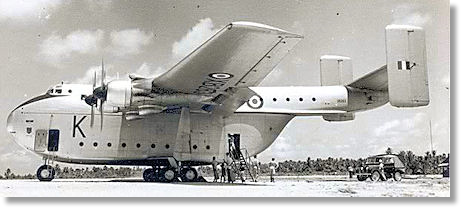
Coming back from Clark Air Base, Philippines after loading claymore mines on a Beverley. To ensure a perfect trim we had to place some of the mines in the boom.
All went well until the boom's heating system started to overheat, billowing smoke, but fortunately didn’t last that long!
The rest of the trip was without any heat. Well, we can’t have both!
Barry Tappenden
All went well until the boom's heating system started to overheat, billowing smoke, but fortunately didn’t last that long!
The rest of the trip was without any heat. Well, we can’t have both!
Barry Tappenden
From: Terry Fryer, Castle Donnington
Sent: Wednesday, March 19, 2014 3:44 PM
Subject: My Scariest Flight
Hi Tony,
I am not much for writing stories about what has happened to me over the years, but one flight sticks out above all my other flights. It was not while I was in the Air Force either, it was whist I was working for an airline based at East Midlands Airport.
Sent: Wednesday, March 19, 2014 3:44 PM
Subject: My Scariest Flight
Hi Tony,
I am not much for writing stories about what has happened to me over the years, but one flight sticks out above all my other flights. It was not while I was in the Air Force either, it was whist I was working for an airline based at East Midlands Airport.
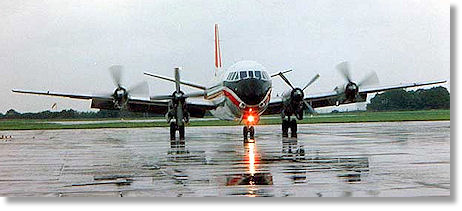
I was acting as Loadmaster on a VC9 Merchantman way back in the 1980s; we had just dropped off a load in Rotterdam and having no other job on the captain decided to get back to East Midlands straight away. He decided he did not need any fuel and would go with what was in the tanks.
We jumped on board and set off, and I took my seat in the cockpit behind the captain. The captain, by the way, was an old veteran with numerous hours flying behind him, but not many hours as captain of a VC9, and the first officer was on secondment from British Airways and had 7000 hours on a VC9.
We jumped on board and set off, and I took my seat in the cockpit behind the captain. The captain, by the way, was an old veteran with numerous hours flying behind him, but not many hours as captain of a VC9, and the first officer was on secondment from British Airways and had 7000 hours on a VC9.
About 15 minutes after take off there was a sequence of bells ringing and lights flashing and the 2 pilots just looked at one another said that the number 2 engine is indicating a fire, so they feathered the number 2 engine and on we flew.
Another few minutes later there were some more loud sirens and lights flashing and the 2 pilots looked at one another and up at the consol above them, and after a few moments it was announced that a fuel pump had packed up and that we could not transfer fuel
from one side of the aircraft to the other. So now we only had fuel in one tank for all the engines and it looked tight for us getting back to East Midlands.
On approach into East Midlands, the weather had turned and it was snowing so the captain decided to make one attempt at a landing and if that failed then we would over fly and go to Manchester, which is about 60 miles from East Midlands. We flew straight over East Midlands at a couple of hunderd feet and saw nothing - not even the lights, so up we went and diverted to Mancherster, where the captain informed ATC of his fuel state and ATC gave him priority to land.
Another few minutes later there were some more loud sirens and lights flashing and the 2 pilots looked at one another and up at the consol above them, and after a few moments it was announced that a fuel pump had packed up and that we could not transfer fuel
from one side of the aircraft to the other. So now we only had fuel in one tank for all the engines and it looked tight for us getting back to East Midlands.
On approach into East Midlands, the weather had turned and it was snowing so the captain decided to make one attempt at a landing and if that failed then we would over fly and go to Manchester, which is about 60 miles from East Midlands. We flew straight over East Midlands at a couple of hunderd feet and saw nothing - not even the lights, so up we went and diverted to Mancherster, where the captain informed ATC of his fuel state and ATC gave him priority to land.
We landed ok and taxied to a halt.
A couple of days later I was speaking to one of the ground engineers who said that if we would have had to go around again at Manchester or been held waiting then we would not have made it as the only tank we could use was bone dry!
The first officer, who was experienced on VC9s, said that nothing like that had ever happened to him before, and hoped it never would again.
Best regards
Terry
A couple of days later I was speaking to one of the ground engineers who said that if we would have had to go around again at Manchester or been held waiting then we would not have made it as the only tank we could use was bone dry!
The first officer, who was experienced on VC9s, said that nothing like that had ever happened to him before, and hoped it never would again.
Best regards
Terry
From: Duncan Grant, Trentham, Staffs
Sent: Wednesday, March 19, 2014 4:18 PM
Subject: Newsletter - My Scariest Flight
Dear Tony
Sent: Wednesday, March 19, 2014 4:18 PM
Subject: Newsletter - My Scariest Flight
Dear Tony
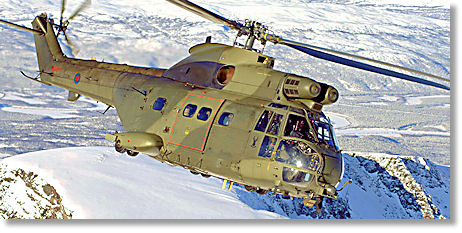
In the early 1980s I worked closely with No 33 Sqn (Pumas) often making excuses to turn up on exercises ranging from Turkey to Norway and points in between.
I always managed to play at "Biggles" at some point during my guest appearances. On this particular occasion I flew with a 33 Sqn exec. We were (and still are!) both Scots so communication was not a problem.
Otterburn training area in NE England was the location, weather was fine and all was well after lift off. I sat back to enjoy a left hand seat as playboy co-pilot. Little did I know that in a few moments all was to change!
I always managed to play at "Biggles" at some point during my guest appearances. On this particular occasion I flew with a 33 Sqn exec. We were (and still are!) both Scots so communication was not a problem.
Otterburn training area in NE England was the location, weather was fine and all was well after lift off. I sat back to enjoy a left hand seat as playboy co-pilot. Little did I know that in a few moments all was to change!
A bang, flashing lights and much muttering from my fellow Scot suggested a problem... I was tasked with pressing this and that, the most important being to lower the undercarriage. All this with no flying pay! The usual stories about fear and life stories did not quite come true but I did manage to assist constructively and I am here to tell the tale. At least there were no flames and we walked away.
However, there is a postscript. Would I ever fly in a whirlybird again? How could I overcome my trembling nerves (other than with a stiff drink). Simple! Fly straightaway in a Germany Army Huey on a free fall parachuting task with Belgique paras! That put everything in perspective and ensured I was not shopped for LMF!
I still had that drink!
Regards
Duncan
However, there is a postscript. Would I ever fly in a whirlybird again? How could I overcome my trembling nerves (other than with a stiff drink). Simple! Fly straightaway in a Germany Army Huey on a free fall parachuting task with Belgique paras! That put everything in perspective and ensured I was not shopped for LMF!
I still had that drink!
Regards
Duncan
From: Jack Dunlop, Aberdeen
Sent: Thursday, March 20, 2014 5:53 PM
Subject: Scariest Flight
Sent: Thursday, March 20, 2014 5:53 PM
Subject: Scariest Flight
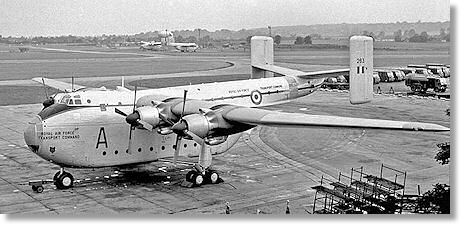
We were on 27 Air Movements Course, RAF Abingdon, November 1966. Four teams were picked to load and unload a Beverley on a training flight to RAF Wildenrath. My team loaded the outward flight.
On returning to Abingdon in the dark, we were coming into land and were near touchdown when all of the engines roared up and we were airborne again. On attempting to land the second time the aircraft bounced all over the runway. God, our hearts were in our mouths. When we arrived at the Terminal the DAMO told us when we get back to the billet we should pray as an aircraft had not been cleared off the runway the first time we came in to land!
On returning to Abingdon in the dark, we were coming into land and were near touchdown when all of the engines roared up and we were airborne again. On attempting to land the second time the aircraft bounced all over the runway. God, our hearts were in our mouths. When we arrived at the Terminal the DAMO told us when we get back to the billet we should pray as an aircraft had not been cleared off the runway the first time we came in to land!
Thanks to the team who loaded the return flight, as we were quite a bit overweight. (Ask Derek Barron or big Murdo McLeod - they were also on board.)
Needless to say our duty free bottles got laldy* that night!
Jack “Jock” Dunlop
*Laldy is a Scottish word most commonly seen in the expression to "Gie it laldy". To give something laldy, whether it be singing a song or running a race, means to put in 100% effort, pull out all the stops, and do so with great enthusiasm or gusto.
Needless to say our duty free bottles got laldy* that night!
Jack “Jock” Dunlop
*Laldy is a Scottish word most commonly seen in the expression to "Gie it laldy". To give something laldy, whether it be singing a song or running a race, means to put in 100% effort, pull out all the stops, and do so with great enthusiasm or gusto.
From: Wayne Donner, Medicine Hat, AB
Sent: Tuesday, March 25, 2014 9:31 PM
Subject: My scariest flight
Sent: Tuesday, March 25, 2014 9:31 PM
Subject: My scariest flight
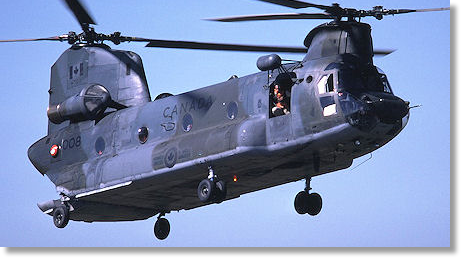
I was a loadmaster on the Chinook Helicopter from 1977 to 1981.
I was in Alert in June 1981, on my last flight before being transferred from 447 Squardron to a base posting. The Canadian Armed Forces had placed relay stations on mountain tops between Alert and Eureka NWT.
On this, my last flight, we were cleaning up the north and slinging empty LAPES (low altitude parachute ejection systems) platforms which had been dropped in the north for fuel caches back to Alert. It was a double 20 foot platform which we folded over to make one single platform. I put Clevis's on each corner of the platform and hooked 40 foot slings to the Clevis's. We are only to hand-tighten the nuts on the bolts. We picked up the platforms and procceded to fly to Alert.
I was in Alert in June 1981, on my last flight before being transferred from 447 Squardron to a base posting. The Canadian Armed Forces had placed relay stations on mountain tops between Alert and Eureka NWT.
On this, my last flight, we were cleaning up the north and slinging empty LAPES (low altitude parachute ejection systems) platforms which had been dropped in the north for fuel caches back to Alert. It was a double 20 foot platform which we folded over to make one single platform. I put Clevis's on each corner of the platform and hooked 40 foot slings to the Clevis's. We are only to hand-tighten the nuts on the bolts. We picked up the platforms and procceded to fly to Alert.
When we were on the approach to Alert and starting to slow down, one of the nuts worked its way off the bolt and because of the weight the opposite sling broke. Our speed was around 100 knots and the platforms are dangling now at 60 feet and swinging each and every way like a piece of plywood in the air and hitting the underside of the aircraft.
I informed the pilot what had happened and he instructed me to release the load. This I did but, to make matters worse, as the load was released the sling got caught on the back wheel. Shortly afterwards the aircraft captain got the helicopter on the ground. There were holes in the bottom of the aircraft and chunks taken from the sides where the platform hit. Thank God it didn't rupture the side fuel tanks!
I informed the pilot what had happened and he instructed me to release the load. This I did but, to make matters worse, as the load was released the sling got caught on the back wheel. Shortly afterwards the aircraft captain got the helicopter on the ground. There were holes in the bottom of the aircraft and chunks taken from the sides where the platform hit. Thank God it didn't rupture the side fuel tanks!
After the reports were filled out, the two pilots, the engineer and myself went up to the quarters we were staying in and the aircraft captain opened a bottle and we all finished a water glass of straight whiskey for that is when the panic set in. It just goes to show with all the training crews go through we averted a tragedy for the crew and the aircraft.
Wayne Donner
Loadie
447 SQN (Retired)
Wayne Donner
Loadie
447 SQN (Retired)
From: Tony Street, Buffalo, NY
Sent: Saturday, March 22, 2014 1:46 PM
Subject: Scary Bristol Freighter Flight
Tony,
I saw a scary thing involving a Bristol Freighter in April of '64. We were batting around Canada's arctic in a "Douglas Racer" (DC-3). The aircraft was on skis as we were building fuel caches on remote islands.
For some R&R and a hot meal, we set in to Resolute Bay (CYRB), Nunavut, where a Bristol Freighter sat with the front doors open. Curiosity drove me to board the aircraft and chat with a crewman. The kite was owned by an oil company and dropped in for refuelling before flying further north.
Sitting below the flight deck and between the main gear was a Caterpillar tractor tread wound up and strapped to a wooden pallet. There was no tie down holding it to the aircraft... so I assumed it was to be offloaded.
Sent: Saturday, March 22, 2014 1:46 PM
Subject: Scary Bristol Freighter Flight
Tony,
I saw a scary thing involving a Bristol Freighter in April of '64. We were batting around Canada's arctic in a "Douglas Racer" (DC-3). The aircraft was on skis as we were building fuel caches on remote islands.
For some R&R and a hot meal, we set in to Resolute Bay (CYRB), Nunavut, where a Bristol Freighter sat with the front doors open. Curiosity drove me to board the aircraft and chat with a crewman. The kite was owned by an oil company and dropped in for refuelling before flying further north.
Sitting below the flight deck and between the main gear was a Caterpillar tractor tread wound up and strapped to a wooden pallet. There was no tie down holding it to the aircraft... so I assumed it was to be offloaded.
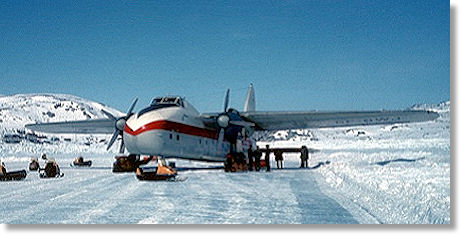
Just then the Ops vehicle drove up to the aircraft and the pilots came aboard, saying to the crewman, "Button it up, we're off!"
Wide-eyed, I blurted, "Aren't you going to tie down the cargo?"
Throwing a briefcase and a bag of box lunches on top of the load, the pilot said, "That'll hold 'er down!" and climbed up into the flight deck.
We watched in awe as they taxied out and took off. The takeoff roll was one of the slowest I have ever seen as they got airborne and disappeared over the horizon at about 1,000 feet.
Cheers
Tony
Wide-eyed, I blurted, "Aren't you going to tie down the cargo?"
Throwing a briefcase and a bag of box lunches on top of the load, the pilot said, "That'll hold 'er down!" and climbed up into the flight deck.
We watched in awe as they taxied out and took off. The takeoff roll was one of the slowest I have ever seen as they got airborne and disappeared over the horizon at about 1,000 feet.
Cheers
Tony
From: David Howley, Melton Mowbray
Sent: Wednesday, March 19, 2014 5:09 AM
Subject: Air Britain - VC10 History
Hi Tony,
John McCrickard is writing a history of the VC10 for Air Britain, two instalments of which appeared in their monthly magazine. I contacted John and asked whether he was going to cover the ground crew (Engs, Movers and GEs).
He would welcome an input from the movers, having already been in contact and received good info from a GE. Can you publish the following extract from his e-mail to me in the next issue please - there must be members who can provide lots of help.
Regards
David
Sent: Wednesday, March 19, 2014 5:09 AM
Subject: Air Britain - VC10 History
Hi Tony,
John McCrickard is writing a history of the VC10 for Air Britain, two instalments of which appeared in their monthly magazine. I contacted John and asked whether he was going to cover the ground crew (Engs, Movers and GEs).
He would welcome an input from the movers, having already been in contact and received good info from a GE. Can you publish the following extract from his e-mail to me in the next issue please - there must be members who can provide lots of help.
Regards
David
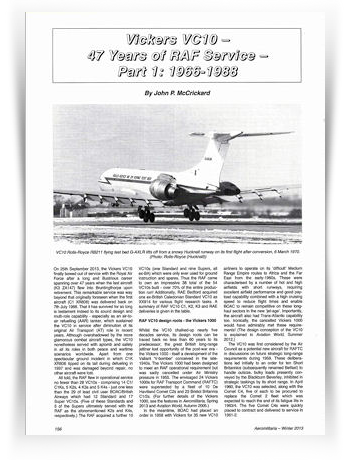
I would very much like to cover the detail of VC10 C1/C1K AT operations and role of the ‘Movers’ in the book, and any memories or interesting anecdotes you have I would be most appreciative of.
I have been in touch with one ex-10 Sqn GE who has been very helpful with information.
I am trying to find the most challenging airfields the aircraft had to operate into worldwide on either routine tasks or on VIP/Royal sorties.
Photos of early VC10 operations are also especially sought particularly on former overseas taskings and bases in the Near and Far East, etc.
I would also like to cover the rise and fall of 10 Sqn ‘airline’ scheduled flights - I have some info, but again seek details on the early period in the 1960s-80s
If you are to help on any of these aspects I would be very grateful.
Many thanks & best regards,
John
john.mccrickard@ntlworld.com
I have been in touch with one ex-10 Sqn GE who has been very helpful with information.
I am trying to find the most challenging airfields the aircraft had to operate into worldwide on either routine tasks or on VIP/Royal sorties.
Photos of early VC10 operations are also especially sought particularly on former overseas taskings and bases in the Near and Far East, etc.
I would also like to cover the rise and fall of 10 Sqn ‘airline’ scheduled flights - I have some info, but again seek details on the early period in the 1960s-80s
If you are to help on any of these aspects I would be very grateful.
Many thanks & best regards,
John
john.mccrickard@ntlworld.com

TriStar retires after 30 years' service
On 24 March, two TriStars of 216 Squadron based at RAF Brize Norton flew an air-to-air refuelling mission over the North Sea before one of them conducted flypasts at airfields associated with its history.
During its service, the TriStar, fondly known as ‘Timmy’ by its crews, has formed the backbone of long range air transport and air-to-air refuelling, participating in nearly every British conflict since it was brought into service.
The fleet of 9 aircraft were acquired as a direct result of the Falklands conflict and the need to provide support to forces in the South Atlantic and to bolster the air-to-air refuelling fleet.
In more recent times TriStars have provided air-to-air refuelling for fast jet aircraft operating over Afghanistan and Libya, and provided a vital airbridge, transporting troops and cargo to Iraq and Afghanistan.
Over a period of 8 years, 216 Squadron has flown to Afghanistan 1,642 times, carrying 250,000 passengers each way and travelling a total distance equivalent to flying around the world 640 times.
Philip Dunne, Minister for Defence Equipment, Support and Technology, said: “TriStar has served the RAF for 30 years and today is an opportunity to celebrate its long and distinguished career.
"Providing vital support, TriStar has carried over 250,000 troops as well as battle-winning supplies to our personnel wherever they are in the world. It also carried out vital air-to-air refuelling of our front line combat aircraft at home and on deployed operations.
“Its replacement, Voyager, is testament to our commitment to provide state-of-the-art transport and refuelling capability for our armed forces. Capable of carrying more, for longer, it has already begun flights to Afghanistan and will also refuel our front line combat aircraft for decades to come.”
The fleet of 9 aircraft were acquired as a direct result of the Falklands conflict and the need to provide support to forces in the South Atlantic and to bolster the air-to-air refuelling fleet.
In more recent times TriStars have provided air-to-air refuelling for fast jet aircraft operating over Afghanistan and Libya, and provided a vital airbridge, transporting troops and cargo to Iraq and Afghanistan.
Over a period of 8 years, 216 Squadron has flown to Afghanistan 1,642 times, carrying 250,000 passengers each way and travelling a total distance equivalent to flying around the world 640 times.
Philip Dunne, Minister for Defence Equipment, Support and Technology, said: “TriStar has served the RAF for 30 years and today is an opportunity to celebrate its long and distinguished career.
"Providing vital support, TriStar has carried over 250,000 troops as well as battle-winning supplies to our personnel wherever they are in the world. It also carried out vital air-to-air refuelling of our front line combat aircraft at home and on deployed operations.
“Its replacement, Voyager, is testament to our commitment to provide state-of-the-art transport and refuelling capability for our armed forces. Capable of carrying more, for longer, it has already begun flights to Afghanistan and will also refuel our front line combat aircraft for decades to come.”
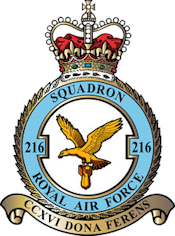
Speaking on the last operational mission of the TriStar, Officer Commanding 216 Squadron, Wing Commander Peter Morgan, said:
“For us this is a very sad occasion. We’ve been very proud of the TriStar over the past 30 years where it’s been involved in nearly every operation in both the air transport and air-to-air refuelling roles.
“Pretty much everyone in the military has been in a TriStar and after 30 years all the aircraft are still in service; it has an impeccable safety record and is working to the very end of its career.”
The TriStar’s duties have been taken over by the Voyager which now provides state-of-the-art air-to-air refuelling in support of the Quick Reaction Force that protects UK and Falkland Islands air space 365-days-a-year.
“For us this is a very sad occasion. We’ve been very proud of the TriStar over the past 30 years where it’s been involved in nearly every operation in both the air transport and air-to-air refuelling roles.
“Pretty much everyone in the military has been in a TriStar and after 30 years all the aircraft are still in service; it has an impeccable safety record and is working to the very end of its career.”
The TriStar’s duties have been taken over by the Voyager which now provides state-of-the-art air-to-air refuelling in support of the Quick Reaction Force that protects UK and Falkland Islands air space 365-days-a-year.
The remaining four TriStar aircraft will leave RAF Brize Norton for the final time today, 25 March, to travel to Bruntingthorpe Airfield in Leicestershire for disposal.
Gov.uk
Gov.uk

♫ Ye'll tak the high road ♪
An unnamed Team Leader was approaching his first route check with trepidation and had prepared the task thoroughly. His team were briefed that they were to perform an offload/onload at Eglin.
After all the briefing details had been finalised, the Team Leader informed his team that he would meet them at he aforementioned location, as he had a romantic weekend planned and did not want to miss out on an opportunity. The team were somewhat surprised at this, but not wanting to undermine the route check they reluctantly agreed.
The day of the task came and there was no sign of their Team Leader. The Wing Commander performing the route check was aghast at this situation until... a mysterious phone call was received from an irate Flight Lieutenant demanding to know why on earth his team had not arrived for the task.
The team Sergeant politely informed the Team Leader (to a background of raucous laughter) that they were at Eglin in the USA while he was at Elgin in Scotland!
After all the briefing details had been finalised, the Team Leader informed his team that he would meet them at he aforementioned location, as he had a romantic weekend planned and did not want to miss out on an opportunity. The team were somewhat surprised at this, but not wanting to undermine the route check they reluctantly agreed.
The day of the task came and there was no sign of their Team Leader. The Wing Commander performing the route check was aghast at this situation until... a mysterious phone call was received from an irate Flight Lieutenant demanding to know why on earth his team had not arrived for the task.
The team Sergeant politely informed the Team Leader (to a background of raucous laughter) that they were at Eglin in the USA while he was at Elgin in Scotland!
From: Bruce Oram, Alicante
Sent: Tuesday, March 25, 2014 3:36 PM
Subject: Memories of Brian Connellan
Sent: Tuesday, March 25, 2014 3:36 PM
Subject: Memories of Brian Connellan
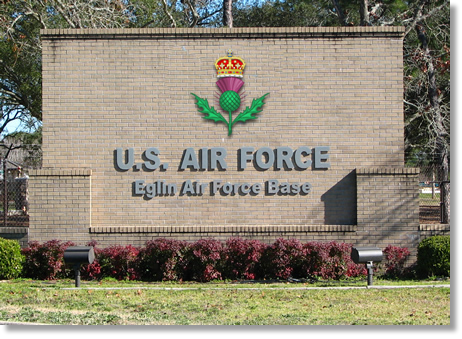

Brian Connellan RIP
An absolute star, as bloke and more especially as a mover. He will be sorely missed by everyone who ever met him.
Tony has asked me to relate a couple of stories about Brian, and I feel honoured to be asked to do this.
The first tale all takes place at Dulles airport, the three amigos were Brian, myself and Charlie Cormack. We were taking pallets off a C130 with a forklift that had no roller tines. We employed the age-old method of using a wooden chock to raise the pallet enough to get a better reach with the tines.
Well, the Page driver happened to drop the pallet, after getting no instructions to do so, right onto Brian's finger!
Tony has asked me to relate a couple of stories about Brian, and I feel honoured to be asked to do this.
The first tale all takes place at Dulles airport, the three amigos were Brian, myself and Charlie Cormack. We were taking pallets off a C130 with a forklift that had no roller tines. We employed the age-old method of using a wooden chock to raise the pallet enough to get a better reach with the tines.
Well, the Page driver happened to drop the pallet, after getting no instructions to do so, right onto Brian's finger!
Medics and an ambulance were called and off down the Beltway we went to hospital. Being wintertime the ambulance had snow chains on, one of which snapped. Fortunately we didn't skid, and after some deft work with a set of bolt cutters we carried on. All through this Brian was in the back of the ambulance continuing to crack jokes.
I left him in the care of the hospital and he turned up next morning a little shaken, but still joking. As everyone in the RAF detachment office looked on, Brian proceeded to shake his flying glove, and what dropped out… the top of his finger!
The next tale takes me to Belize, where I had the joys of working with Brian and Tony Harris (the inseparable brothers). It was in this environment where on the night I was promoted, Brian gave me the nickname which has followed me ever since “ORAL ORAM.”
Cheers Brian and rest in peace my friend!
I left him in the care of the hospital and he turned up next morning a little shaken, but still joking. As everyone in the RAF detachment office looked on, Brian proceeded to shake his flying glove, and what dropped out… the top of his finger!
The next tale takes me to Belize, where I had the joys of working with Brian and Tony Harris (the inseparable brothers). It was in this environment where on the night I was promoted, Brian gave me the nickname which has followed me ever since “ORAL ORAM.”
Cheers Brian and rest in peace my friend!
From: Allan Walker, Burnley, Lancashire
Sent: Thursday, March 27, 2014 2:31 AM
Subject: My Hairiest Flight
Sent: Thursday, March 27, 2014 2:31 AM
Subject: My Hairiest Flight
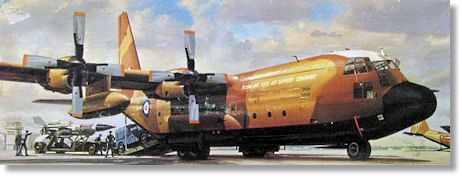
My hairest flight was on a routine “Missex” from West Raynham to one of the “Clutch Stations” in Germany. We arrived at West Raynham and loaded 2 Bloodhound Missiles without any problems as we had done several times before. Paperwork was checked and we set off.
Halfway across the North Sea there was a loud hissing noise and the cargo hold filled with a fine mist which we discovered later was fuel from one of the missiles. For some reason the missile had not been fully prepared for flight and the altitude caused it to vent.
Halfway across the North Sea there was a loud hissing noise and the cargo hold filled with a fine mist which we discovered later was fuel from one of the missiles. For some reason the missile had not been fully prepared for flight and the altitude caused it to vent.
The next few minutes were pandemonium. The aircraft was heading downwards at a great rate of knots. As one of the team rushed up front to get hold of the loadmaster who was on the flight deck he was going one way the “ Loadie” was dashing down to the rear end in the opposite direction. He shouted for us to strap in and opened the ramp.
The air soon cleared but we spent the rest of the flight staring out of the rear end watching the countryside flash past us. Heart rate for all of the team was pretty high until we landed in Germany.
The air soon cleared but we spent the rest of the flight staring out of the rear end watching the countryside flash past us. Heart rate for all of the team was pretty high until we landed in Germany.
Offload and on-load went surprising well but we had a bit of a nervous flight back wondering if the missiles had been properly prepared, however no further incident took place. Back at Abingdon a few beers were sunk in fairly quick time and the story was told a few times over the next few months, probably being embellished the further away we got from the incident.
Looking back now, it could have been quite a different ending.
Allan Walker “H” Team
Looking back now, it could have been quite a different ending.
Allan Walker “H” Team
The illustration above, showing the Bloodhound missile being loaded incorrectly, was taken from the Airfix model kit as advertised on the Old Model Kits website http://www.oldmodelkits.com/index.php?detail=11884&searchtext=bloodhound
From: Brian Harper, Glenwood, NL
Sent: Monday, March 24, 2014 5:45 PM
Subject: UKMAMS Photos
Sent: Monday, March 24, 2014 5:45 PM
Subject: UKMAMS Photos
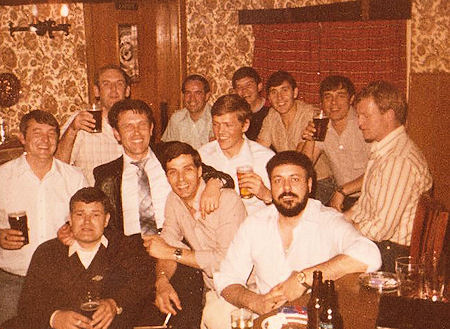
Hi Tony,
I came across these photos and thought that the Old Bods would enjoy them
Cheers
Brian
I came across these photos and thought that the Old Bods would enjoy them
Cheers
Brian
OLÉ ATLAS!
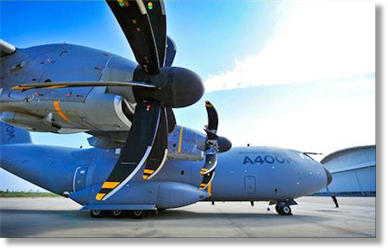
The RAF has paid an exclusive behind the scenes visit to Airbus Defence and Space in Seville, Spain to see the progress being made on A400M, otherwise known as ATLAS.
The next generation military transport aircraft will bring a unique capability to the RAF as it combines the intercontinental range of the C-17 with the ability to do tactical rough landings of the C-130 Hercules.
The next generation military transport aircraft will bring a unique capability to the RAF as it combines the intercontinental range of the C-17 with the ability to do tactical rough landings of the C-130 Hercules.
Air Officer Commanding 2 Group, Air Vice Marshal Sean ReynoldsCBE DFC RAF said:
"It was a privilege to visit Airbus Defence and Space in Seville to see at first hand the progress that is being made with the A400M programme. As part of bringing the aircraft into RAF service, our people including aircrew, engineers and support crew are currently preparing at the International Training Centre to operate the aircraft.
"ATLAS will bring a unique capability to the RAF’s Air Mobility fleet, with combined strategic and tactical capabilities ensuring that it will be a key capability in the decades to come. ATLAS will be based at RAF Brize Norton, which has an exciting future as it prepares to operate the RAF’s newest aircraft."
"It was a privilege to visit Airbus Defence and Space in Seville to see at first hand the progress that is being made with the A400M programme. As part of bringing the aircraft into RAF service, our people including aircrew, engineers and support crew are currently preparing at the International Training Centre to operate the aircraft.
"ATLAS will bring a unique capability to the RAF’s Air Mobility fleet, with combined strategic and tactical capabilities ensuring that it will be a key capability in the decades to come. ATLAS will be based at RAF Brize Norton, which has an exciting future as it prepares to operate the RAF’s newest aircraft."
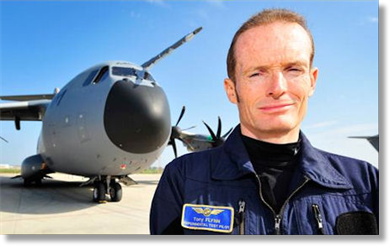
Tony Flynn, 45, ex-RAF pilot and Experimental Test pilot is busy putting the aircraft through its paces:
“For a pilot, A400M is fantastic to fly. You have the latest generation of fly by wire so it’s easy to fly. It’s supposed to be that way so pilots can focus on the mission. We’ve had lots of pilots from customer nations together with the test pilots fly the aeroplane and everybody is impressed by its handling qualities.”
The A400M programme was born from the combined needs of European and International partners, and is an opportunity for the French Air Force (FAF) and the RAF to work together for mutual benefit following the Defence and Security Cooperation Treaty.
“For a pilot, A400M is fantastic to fly. You have the latest generation of fly by wire so it’s easy to fly. It’s supposed to be that way so pilots can focus on the mission. We’ve had lots of pilots from customer nations together with the test pilots fly the aeroplane and everybody is impressed by its handling qualities.”
The A400M programme was born from the combined needs of European and International partners, and is an opportunity for the French Air Force (FAF) and the RAF to work together for mutual benefit following the Defence and Security Cooperation Treaty.
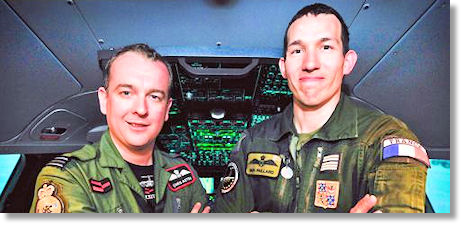
Flight Lieutenant Chris Aston, 34, a former C130 Hercules pilot, and FAF pilot Lieutenant Colonel Ben Paillard, 36, a previous exchange officer with 47 Sqn, are both learning to fly the aircraft in a state of the art simulator. Chris said:
It’s been good to get different ideas in the way we operate. The main aim is for interoperability; to make sure, for example, that a British aircraft could fly to a French airfield, pick up a French load and fly it somewhere and they wouldn’t see any difference in the way we operate.”
It’s been good to get different ideas in the way we operate. The main aim is for interoperability; to make sure, for example, that a British aircraft could fly to a French airfield, pick up a French load and fly it somewhere and they wouldn’t see any difference in the way we operate.”
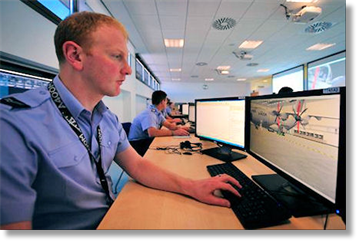
Ahead of its arrival at RAF Brize Norton, planned later this year, RAF loadmasters and avionics technicians are also learning to operate the aircraft. Engineer, Corporal Lloyd Hill, 32, is currently training to be an instructor:
“I saw A400M fly at RIAT and really liked it and applied for the programme, I didn’t expect to get it! There are a lot of modern systems on the aircraft and I’m excited to see it up close and see what it can do. The next phase of training will be on the Final Assembly Line (FAL) and training on handling the aircraft."
“I saw A400M fly at RIAT and really liked it and applied for the programme, I didn’t expect to get it! There are a lot of modern systems on the aircraft and I’m excited to see it up close and see what it can do. The next phase of training will be on the Final Assembly Line (FAL) and training on handling the aircraft."
Currently undergoing construction on the FAL is ‘MSN 015’, which will be the first ATLAS in RAF Service. ATLAS is at the forefront of modern technology with its software, wings and the aircrew simulator being British manufactured. The cutting edge aircraft will bring an enhanced capability to the RAF.
ATLAS can carry 116 Armed Forces personnel, including paratroopers, a Chinook helicopter, heavy outside cargo and modern heavy military armoured vehicles. It can fly faster and further than the C130 Hercules and will be used in peace, crisis or conflict.
ATLAS can carry 116 Armed Forces personnel, including paratroopers, a Chinook helicopter, heavy outside cargo and modern heavy military armoured vehicles. It can fly faster and further than the C130 Hercules and will be used in peace, crisis or conflict.
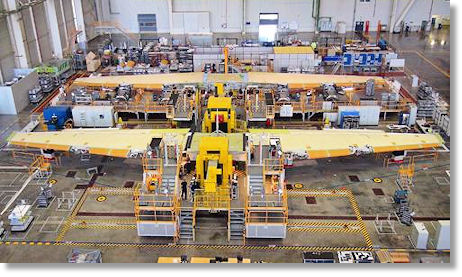
raf.mod.uk
From: Basil Hughes, Pattaya
Sent: Tuesday, March 25, 2014 8:03 PM
Subject: Important Information for British Ex-Pats
Sent: Tuesday, March 25, 2014 8:03 PM
Subject: Important Information for British Ex-Pats
Tony,
Expatriate Britons have been caught up in a major crackdown on health tourists...
Expatriate Britons have been caught up in a major crackdown on health tourists...
David Cameron is now considering taxing expat Brits at significantly higher rates than those in the UK...
Regards
Basil
Basil
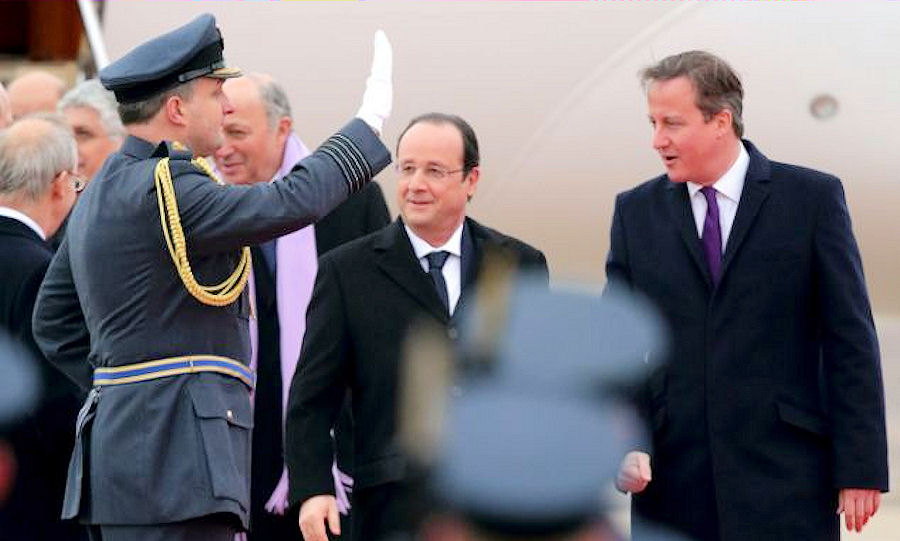
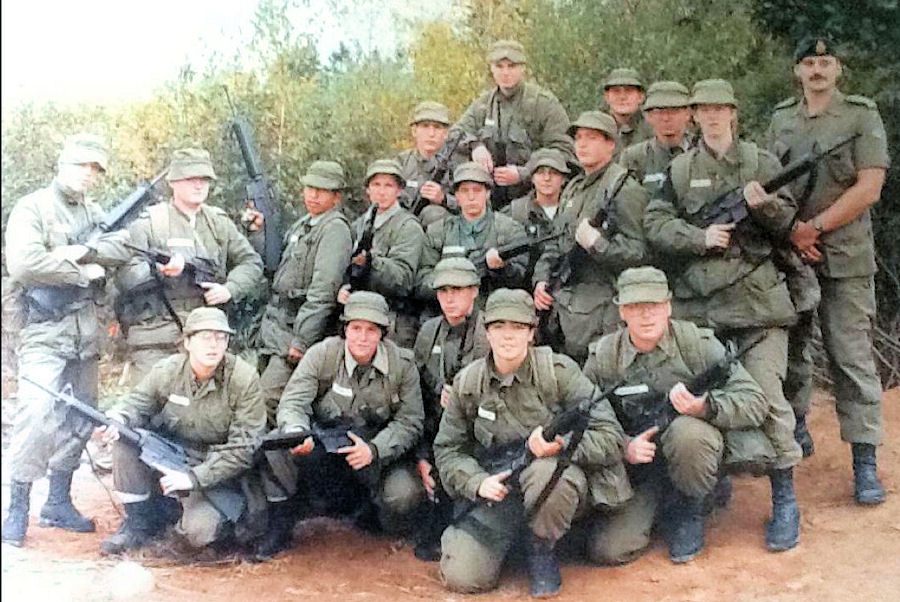
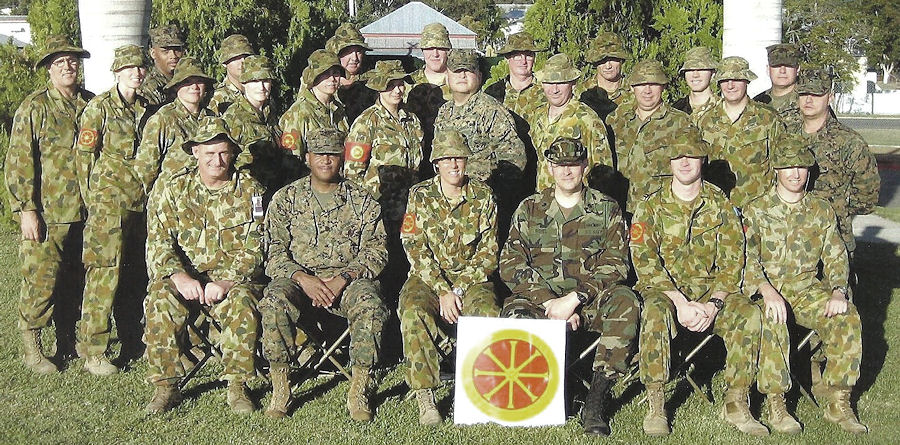
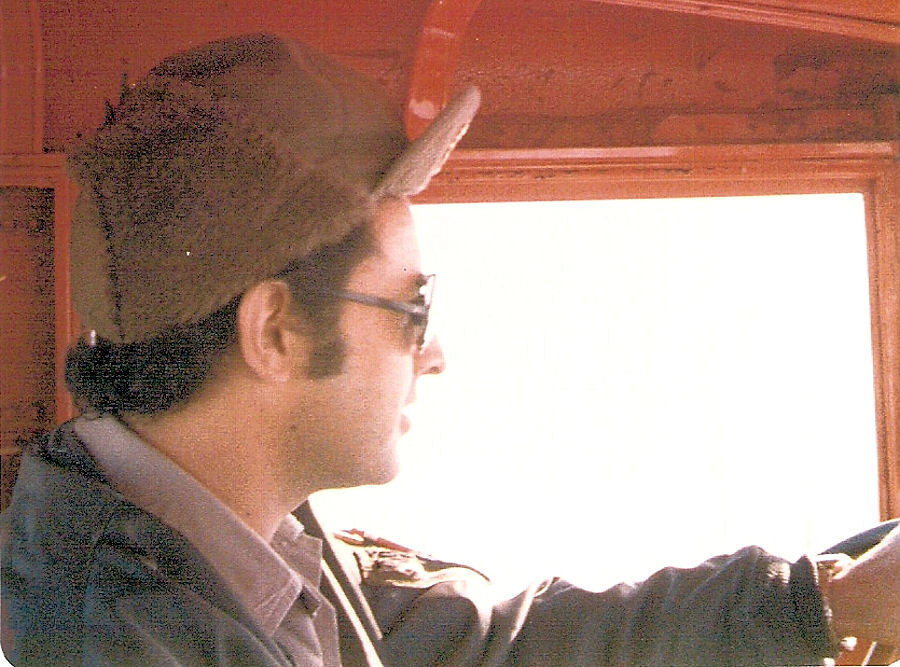
This newsletter is dedicated
to the memories of
Brian Connellan
and
Peter Murphy
to the memories of
Brian Connellan
and
Peter Murphy















